Pademelon Profile
Macropods hop about all over the Australian landmass. Kangaroos are the famous ones, and wallabies are next-best known.
Between the two, there’s a group of wallaroos, who act as an arbitrary buffer in case you start to think you know what’s going on. Then, there are tree kangaroos, which are actually a type of arboreal rock wallabies.
If this isn’t convoluted enough, there’s more. At the lower end of the size spectrum, there are pademelons, a genus of small, wallaby-like macropods whose common name comes from the indigenous language and means “Little kangaroo of the forest”.
If this isn’t convoluted enough, there’s more. At the lower end of the size spectrum, there are pademelons, a genus of small, wallaby-like macropods whose common name comes from the indigenous language and means “Little kangaroo of the forest”.
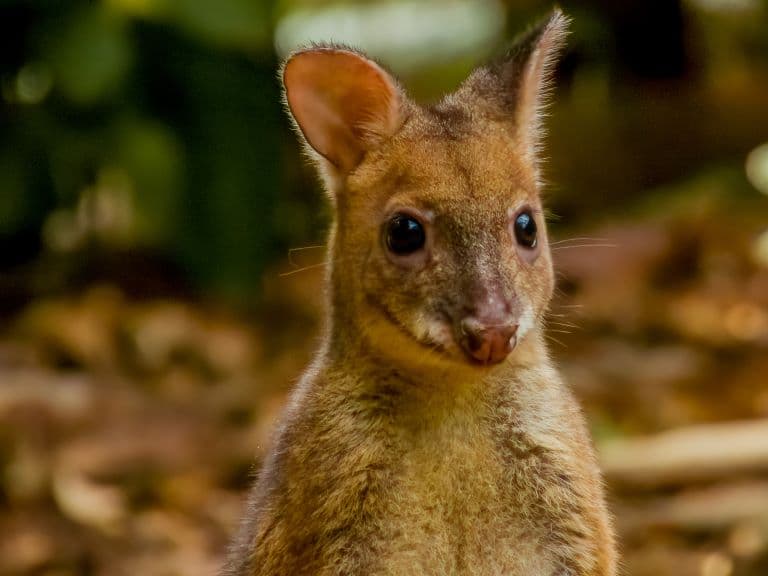
Pademelon Facts Overview
| Habitat: | Thick scrubland, dense forested undergrowth, and swampy areas with long grasses and bushes |
| Location: | Australia and New Guinea |
| Lifespan: | Up to 8 years in the wild, 10 in captivity |
| Size: | Around 60cm (4 ft) tall, largest is around 1m (3 ft) |
| Weight: | Up to 7 kg (15 lb) |
| Colour: | Greyish brown |
| Diet: | Grasses, shrubs, fruit, and other vegetation |
| Predators: | Thylacines (historically), quolls, tasmanian devils, now dogs, cats, foxes |
| Top Speed: | Not reported |
| No. of Species: | 7 |
| Conservation Status: | Least Concern to Endangered (IUCN) |
Pademelons are small macropods, more adapted to forest environments than their larger and better-known cousins. They’re stocky, with thick tails, and tend to move differently than the hopping gait we associate with kangaroos and wallabies,
This has led to some confusion from local people, who have mistaken them for an extinct predator on more than one occasion.
Some of the seven species seem to be doing well, despite traditionally being hunted, but others are suffering from a mix of overexploitation and invasive predators.
Interesting Pademelon Facts
1. They’re pouch weasels
Unlike a lot of the macropod groups, these are easily definable by their genus. Thylogale comprises seven species of little hoppers, from mainland Australia to Tasmania and New Guinea.
They’re solitary and herbivorous, and love dense Eucalyptus forests, where they mostly eat fallen leaves, or in the Tasmanian species, lots of juicy flowers.
The name translates from Greek to “Pouch weasel” 1
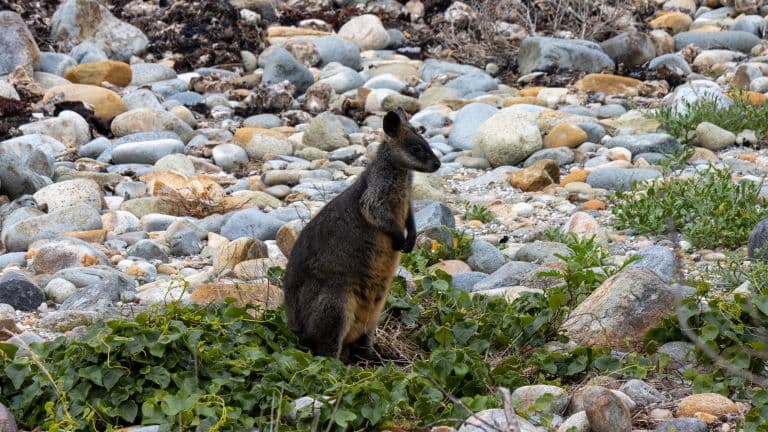
2. They’re Forest wallabies
These macropods are much less keen on the open spaces that the larger species love and prefer to stick to the verges of thick forests or long grasses in swamps.
They get to do this on account of their smaller stature, and more quadrupedal mode of locomotion when grazing, which, as we’ll touch on later, has led to some amusing misunderstandings among the local human populations.
These are some of the ways they have differentiated themselves from the rest of the groups and avoided competition. Competition with other species, at least.
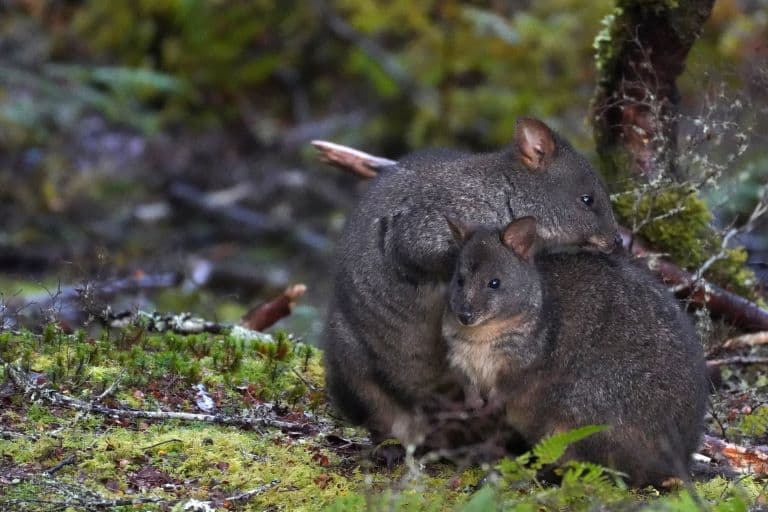
3. They strangle each other
There’s plenty to argue about between pademelon, and researchers studying local invasive fauna on trail cams are inundated with footage of the little pouch weasels trying to strangle one another.
As solitary animals, they appear to be quite grumpy, too, and like kangaroos, they employ a sort of grappling attack when fighting. But with the smaller arms, this manifests as a two-handed Bart Simpson chokehold from the front, which looks particularly cartoonish and funny.
Othr quirky behaviours in this group include grass-pulling, which involves tearing up a handful of grass and throwing them angrily against their chests, and the familiar boxing form of ritualised combat, often attributed to kangaroos.
All in all, these are quite eccentric little macropods.
4. They used to be a thylacine’s main food
Before its extinction, particularly in Tasmania, these mini-roos would have been a main source of protein for the island’s largest predator, the Tasmanian wolf, or Thylacine.
These poor marsupial hunters were eradicated by hysterical livestock farmers and likely went extinct in the ‘90s or a little before that. Now, they’ve become something of a legend, like the monster of Loch Ness, and a lot of the time, pademelons are responsible.
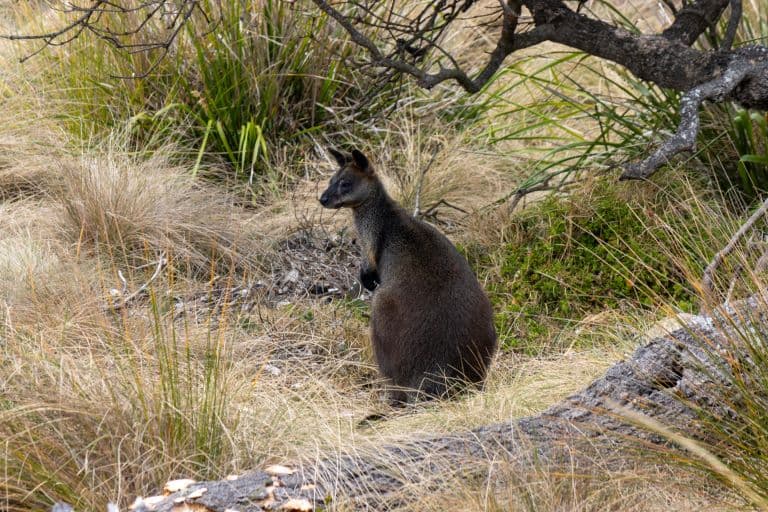
5. Now they’re thylacine impersonators
Since its extinction, the Thylacine has become a Golden Fleece for locals looking for more excitement in their lives.
Sightings of thylacine are reported here and there, but none are confirmed, and far more qualified people have tried and failed to find any sign of them.
But these sightings aren’t all imaginary. It appears that the peculiar gait of the pademelon makes it look a bit like a thylacine from a distance.
They have longer arms than wallabies and kangaroos, proportionally to their hind limbs, which means they walk differently. Less hoppy, more quadrupedal.
Experts think that these little guys are responsible for a lot of the reported sightings, and since there’s no sign of scat or any footprints left behind by a thylacine, chances are they’re right. 2
6. They were hunted
It wasn’t just marsupial predators who made use of the pademelons for food. Indigenous tribes would benefit hugely from a pademelon kill. For thousands of years, the pouch weasel provided local people with meat, sinew for binding, necklaces, and even sewing needles for leather.
Their extra fluffy fur was also more valuable than kangaroo hair.
7. They’re hunted
Unfortunately, colonisers greatly accelerated pademelon hunting when they discovered how good the meat tastes, and now some are threatened and others are even endangered.
The New Guinea species are the worst affected, with deforestation and hunting with dogs on the rise, pushing them almost to extinction.
But the Australian species have their own struggles, with feral cats, foxes and dogs all contributing to their decline. 3
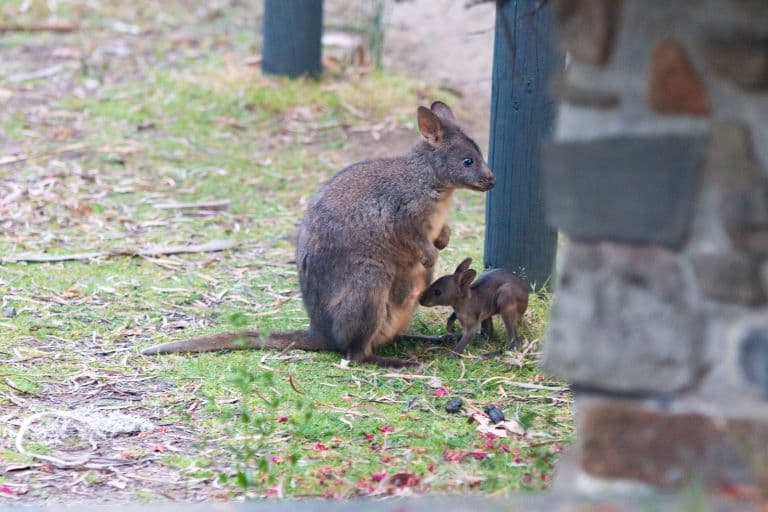
Pademelon Fact-File Summary
Scientific Classification
| Kingdom: | Animalia |
| Phylum: | Chordata |
| Class: | Mammalia |
| Order: | Diprodontia |
| Family: | Macropodidae |
| Genus: | Thylogale |
Fact Sources & References
- “Pademelon Facts & Worksheets”, kidsconnect.
- Zoe Kean (2023), “What is a pademelon — and why it could be the little forest-dwelling creature’s time to shine?”, ABC Net.
- “New Guinea Pademelon”, IUCN Red List.
